In 2025, mobile is where your target audience and your strategy must be. But staying ahead isn’t easy with tighter budgets, quick turnarounds, and growing pressure to show results.
After partnering with over 200 tech brands and analyzing data from campaigns that generated over 1.5 billion views, we’ve identified the mobile marketing statistics that actually matter—and more importantly, how to build systems that deliver consistent results where your audience spends most of their time.
In this guide, we’ll explore the most impactful mobile marketing statistics, examine how they should influence your content strategy, and provide a framework for developing mobile-first video content that drives measurable business results.
Content
The Top 30 Mobile Marketing Statistics for 2025
1. 72% of all global internet traffic now comes from mobile devices
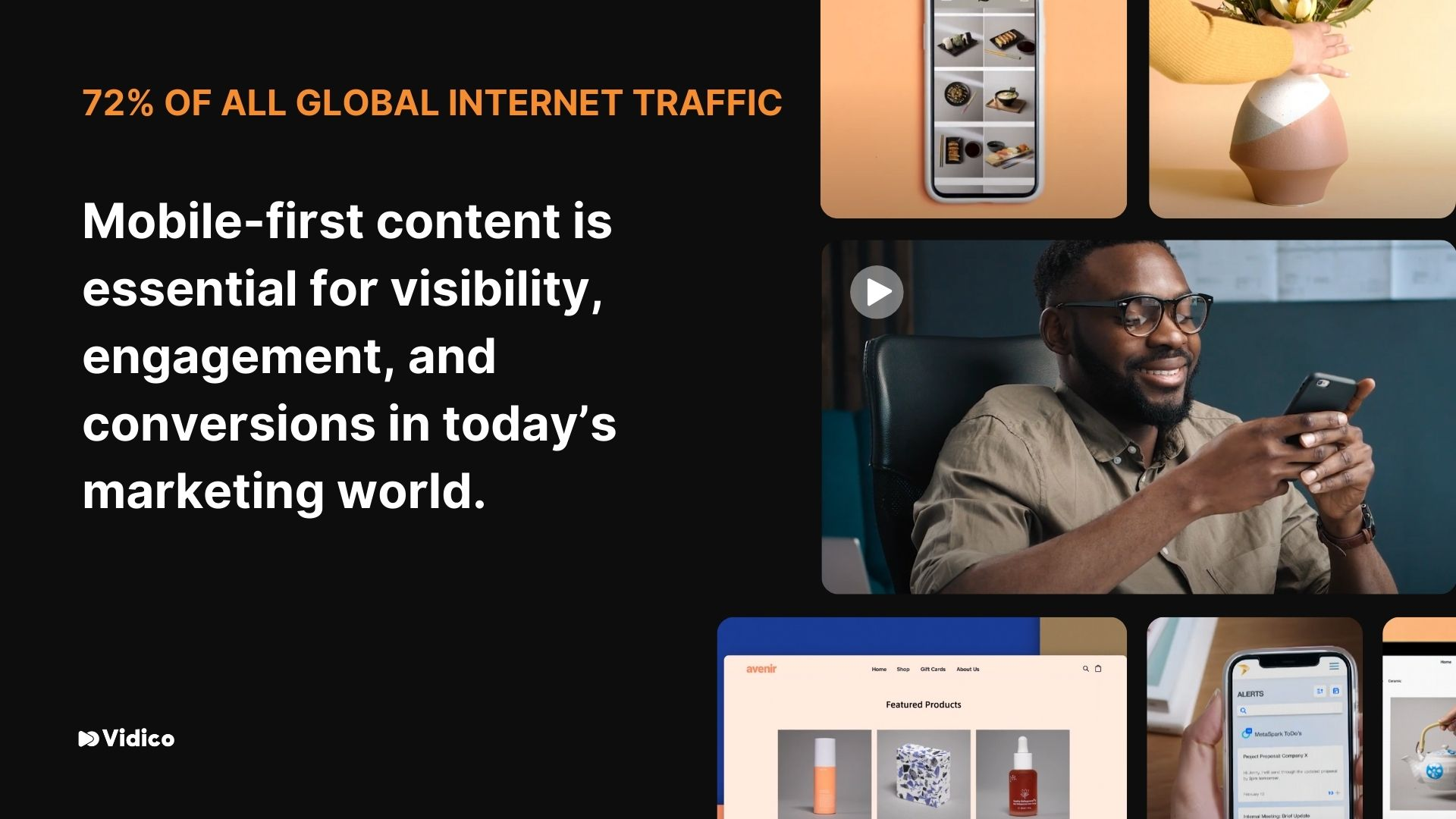
That’s not just a trend—it’s the default. When nearly three-quarters of online activity happens on a phone or tablet, your content strategy needs to start there, not adapt later.
If your videos, ads, or landing pages aren’t built for mobile first, you’re likely missing your target audience in their most active moments. Mobile marketing isn’t nice anymore—it’s where brand visibility, engagement, and conversions happen in the marketing world.
We’ve seen tech brands scale faster simply by optimizing video content for mobile—shorter formats, faster load times, and vertical layouts—all designed for where potential customers are.
Case Study: TikTok Shop
When TikTok Shop needed to scale creative for mobile-first audiences, we delivered over 40 high-performing vertical videos in just 9 days. The outcome? A 400% increase in creative output and 1 million+ organic views in 5 days → See our work
2. The average American spends 5.4 hours on their mobile device daily
That’s over 1,900 hours a year—on just one screen [1]. Mobile devices have become the central hub for everything: communication, entertainment, online shopping, and decision-making.
That’s where mobile-first video makes a difference. It’s a format designed for how people consume content today—and we’ve seen it drive higher engagement and better marketing tactics.
3. Mobile ad spending will exceed $216 billion in 2025
According to Statista, mobile ad spending is projected to reach $228.11 billion globally in 2025 [2]. That’s not just a big number—it’s a clear signal of where brands are placing their bets.
Mobile is now the battleground for attention, and the brands that stand out will create content made for mobile—not just resized to fit it.
4. 63% of Google searches occur on mobile devices in the U.S.
When someone has a question, curiosity, or purchase intent, they’re likely reaching for their phone.
This stat shows that mobile isn’t just for entertainment—it’s central to decision-making. From quick product comparisons to “how-to” queries, search behavior has gone mobile.
If your videos aren’t aligned with how people search and consume on mobile, you’re missing the most valuable moments to show up and stand out.
5. 98.5% of Facebook users access the platform via mobile devices
Facebook isn’t a desktop experience anymore—it’s mobile [3]. Nearly every user scrolls, watches, and interacts on their phone. That means your content isn’t just seen on mobile—it’s expected to be built for it.
This stat underscores the need for mobile-native creative: short videos, vertical framing, fast hooks, and mobile messaging that fits the feed.
6. 72.9% of all online sales in 2025 are expected to come from mobile shopping
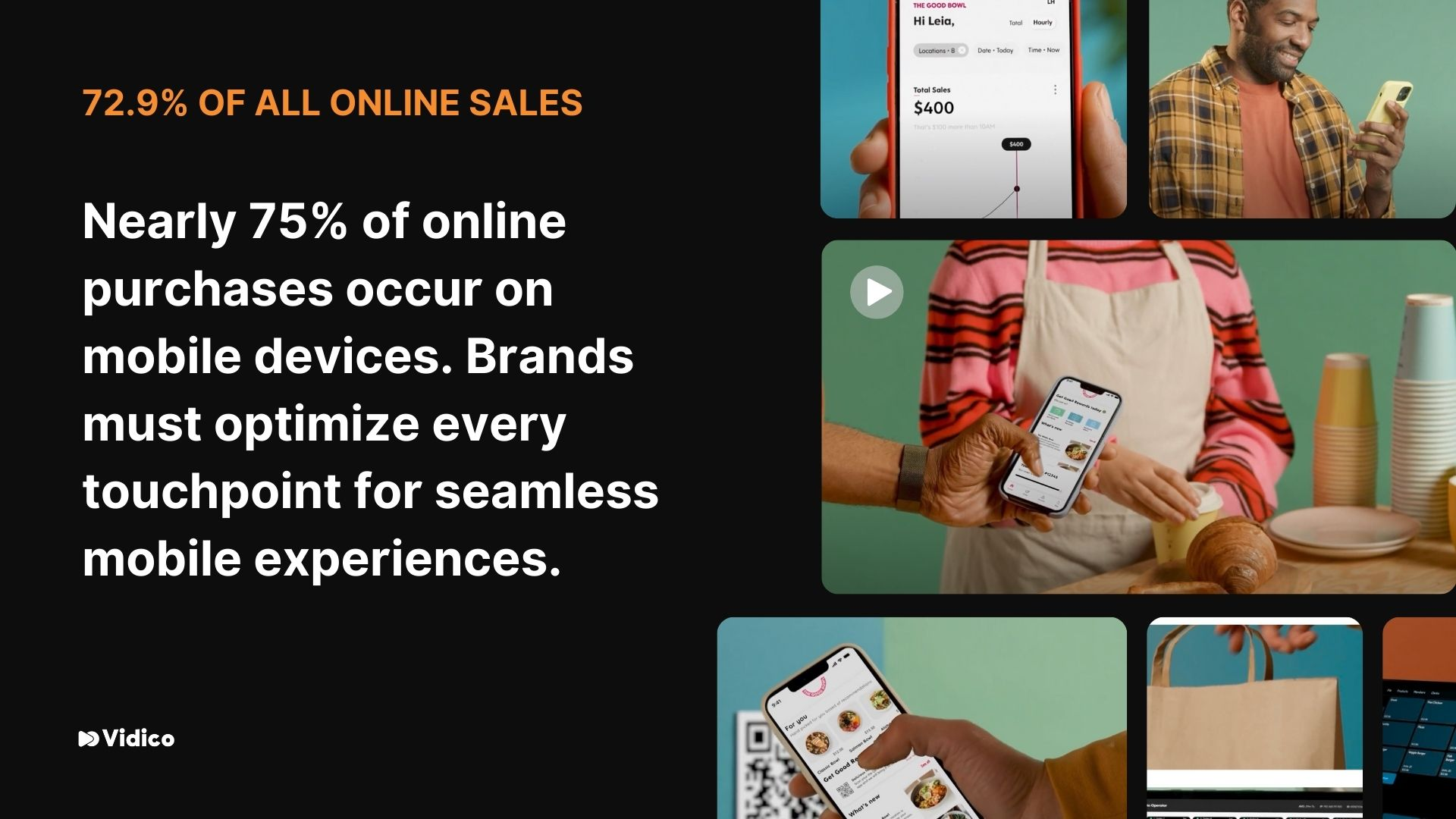
That means nearly three out of every four online purchases will happen on a mobile device. People are not just browsing on their phones—they’re buying, subscribing, and converting there, too [4].
This shift changes everything about how brands should approach the customer journey. From discovery to online shopping, every touchpoint must feel seamless on mobile.
Get our Free Video Marketing Plan to benchmark your creative efficiency against industry leaders →
7. 61% of consumers have a higher opinion of brands with mobile-friendly websites
First impressions matter—and for most people, that first impression happens on a phone.
When your site loads quickly, looks great on mobile and feels intuitive to navigate, it sends a clear message to many consumers: your brand is modern, reliable, and built with the user in mind.
This digital marketing campaign stat shows that mobile-friendly websites impact usability and directly shape brand perception.
This extends beyond your website. Your videos, landing pages, and product experiences all play a part.
8. 66% of email marketing is opened on mobile devices
Email is still one of the most effective marketing channels, but it’s no longer read on desktops. Two-thirds of your target audience opens email marketing on their phones, often while multitasking or moving.
That means your content needs to work instantly: short subject lines, clear CTAs, and—most importantly—mobile-friendly visuals. If your videos or landing pages aren’t optimized for mobile, you risk losing engagement when someone taps through.
9. 47% of people prefer to check their emails on a mobile device
Nearly half of your target audience chooses to read email marketing campaigns on their phones—not just out of convenience but because it fits their daily routine [5].
Morning scrolls, quick inbox checks between meetings, or late-night browsing—it all happens on mobile.
10. 52% of all PPC clicks come from mobile devices
PPC (pay-per-click) advertising is one of the most direct ways to drive traffic [6]—and now, over half of those clicks happen on mobile. Whether it’s Google Ads or social media campaigns, your paid media shows up where people are scrolling, not sitting at a desk.
But getting the click-through rate is just the beginning. If your landing page or video content isn’t optimized for mobile, you risk losing that hard-earned attention immediately.
11. 42% of all mobile purchases come from social media and e-commerce sites
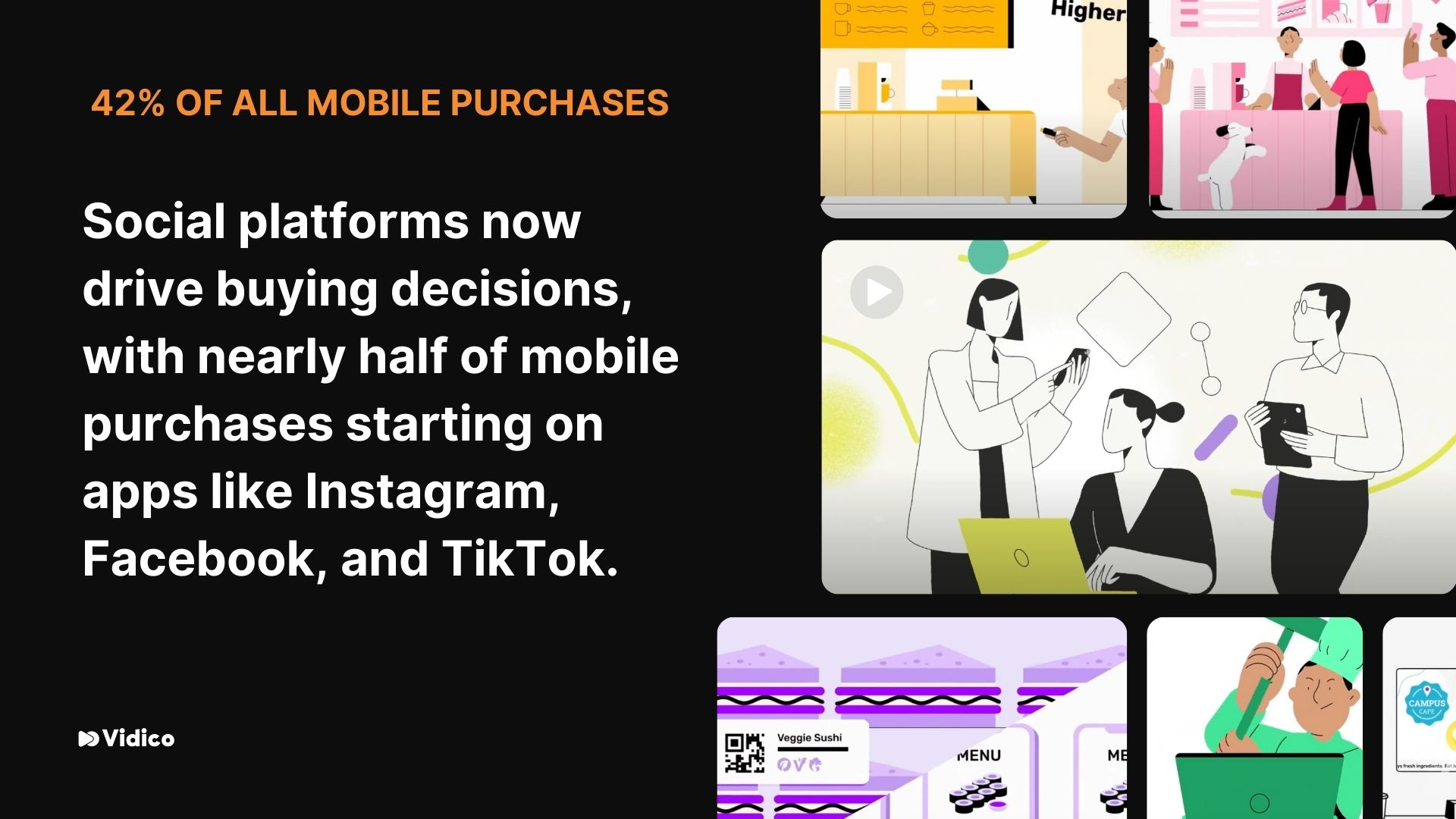
Social platforms aren’t just for browsing anymore; they drive real buying decisions [7]. Nearly half of all mobile purchases start on apps like Instagram, Facebook, and TikTok, where internet users discover products organically through content, ads, or influencer posts.
We help brands create mobile-first social videos that don’t just stop the scroll—they lead to clicks, conversions, and measurable growth.
Sign up for our Video for Growth Newsletter to maximize content performance across channels →
12. TikTok remains the most downloaded mobile app globally
TikTok’s rise to the top shows where attention is moving: toward short, mobile-first videos that entertain, inform, and convert—all in under a minute [8]. This isn’t just a trend—it’s a signal.
But success on the platform requires content that feels native—authentic, fast-paced, and made for vertical screens.
13. 19% of U.S. digital marketing budgets are allocated to mobile advertising
Nearly one-fifth of total marketing spend in the U.S. goes to mobile ads [9]. That’s a significant slice—reflecting a growing recognition that mobile isn’t just where people are; it’s where social media marketing performance happens.
As brands shift marketing budgets toward mobile, the pressure to deliver search results increases. That means every ad, every asset, and every click needs to be optimized for mobile experiences—from the scroll to the sale.
14. Based on the latest research, 90% of YouTube views occur on mobile devices
YouTube may feel like a desktop platform, but it’s not—nine out of 10 views happen on mobile [10]. Whether it’s how-to tutorials, product reviews, or brand storytelling, viewers are watching content in the palm of their hand.
This stat makes one clear: you’re missing the moment if your video isn’t optimized for mobile viewing—fast load times, clear visuals, and tight framing. It’s not just about getting views; it’s about keeping attention in a mobile-first world.
15. 61% of users are unlikely to return to a website they had trouble accessing on mobile
Mobile users don’t give second chances. If your site is slow, hard to navigate, or not optimized for smaller screens, more than half your visitors won’t come back—and that’s lost trust, loss of high-quality leads, and lost revenue.
In a mobile-first world, your website and content need to load fast, work seamlessly, and guide internet users to action. That includes everything from your homepage to your videos.
16. Mobile users are 40% more likely to make impulse purchases
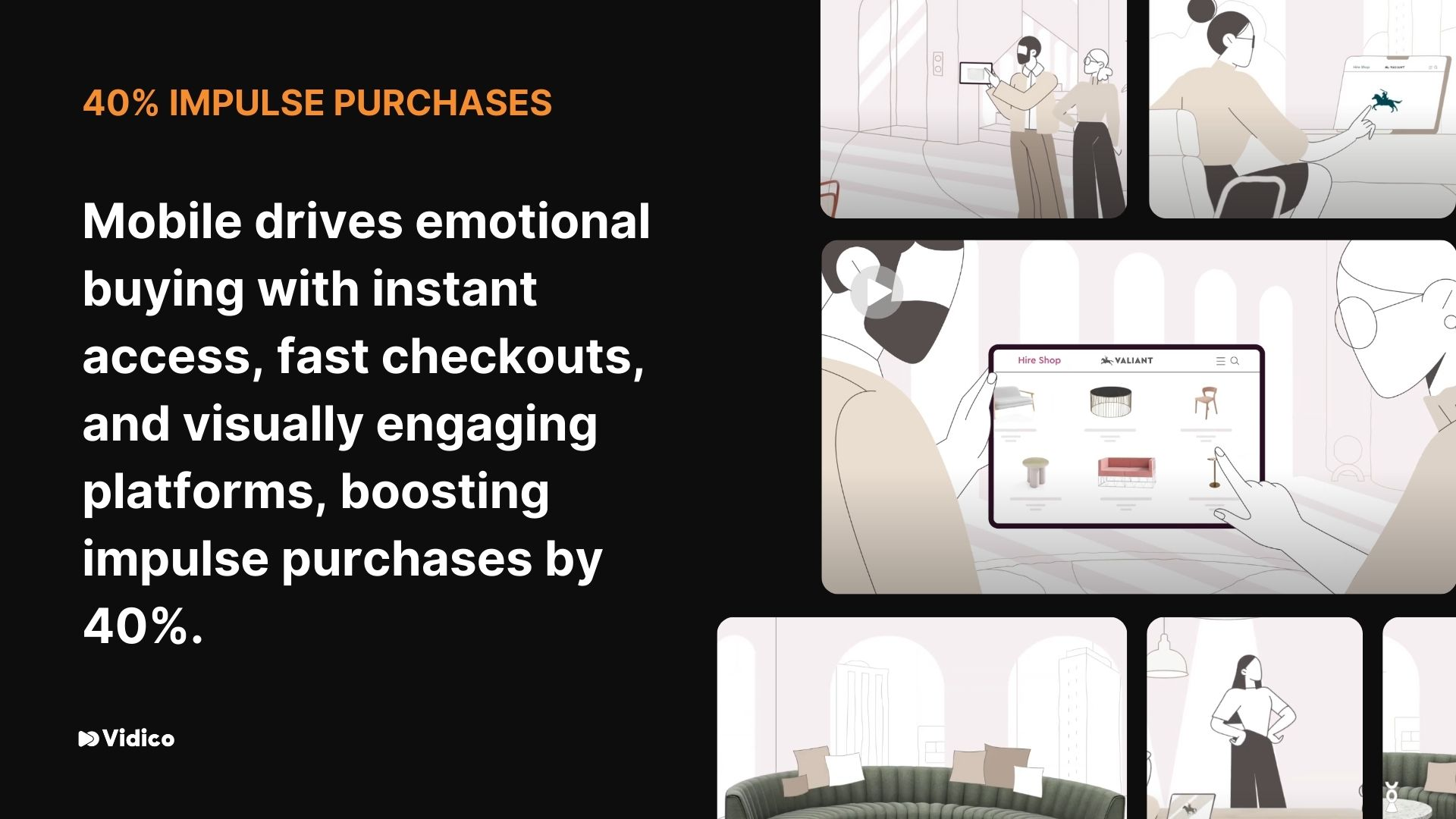
Mobile isn’t just convenient—it’s emotional. With instant access, fast checkouts, and visually driven platforms, smartphone users are likelier to purchase on the spot.
That 40% lift in impulse purchases reflects how mobile encourages quick decisions and reactive buying behavior.
17. 205 times a day is how often Americans check their phones
Americans check their phones 205 times a day– that’s roughly once every 5 minutes [11].
Phones aren’t just tools anymore—they’re extensions of daily life. People turn to social media for updates, answers, entertainment, and purchases—often without thinking twice, making mobile marketing more helpful for brands.
18. 530 million mobile ad-block users exist worldwide
Over half a billion people actively avoid traditional ads on their phones, which is a sign that social media users want useful content rather than interruption.
For marketers, this shift means consumers rely less on intrusive formats and more on native, relevant content. Mobile video, especially when integrated into social feeds or storytelling formats, can bypass social media ad fatigue and build real engagement to help in digital marketing strategy.
19. 43.2% of Americans consider themselves “addicted” to their phones
Nearly half the general population primarily admits they can’t put their phone down [12]. That level of attachment means mobile isn’t just a channel—it’s a great digital marketing strategy where daily habits, decisions, and emotions live.
Watch our short video on What You Need from a Creative Agency in 2025 →
20. 82% of mobile users search on their phones for details when in-store
Even when potential customers stand in front of a product, they still reach for their phones [13]. Whether they’re doing so to compare prices, check reviews, or watch a quick demo, mobile plays a critical role in real-time decision-making.
This social media stat proves that mobile isn’t just part of the funnel—it’s present at the point of purchase.
21. 80% of Gen Z primarily uses mobile search compared to 35% of Boomers
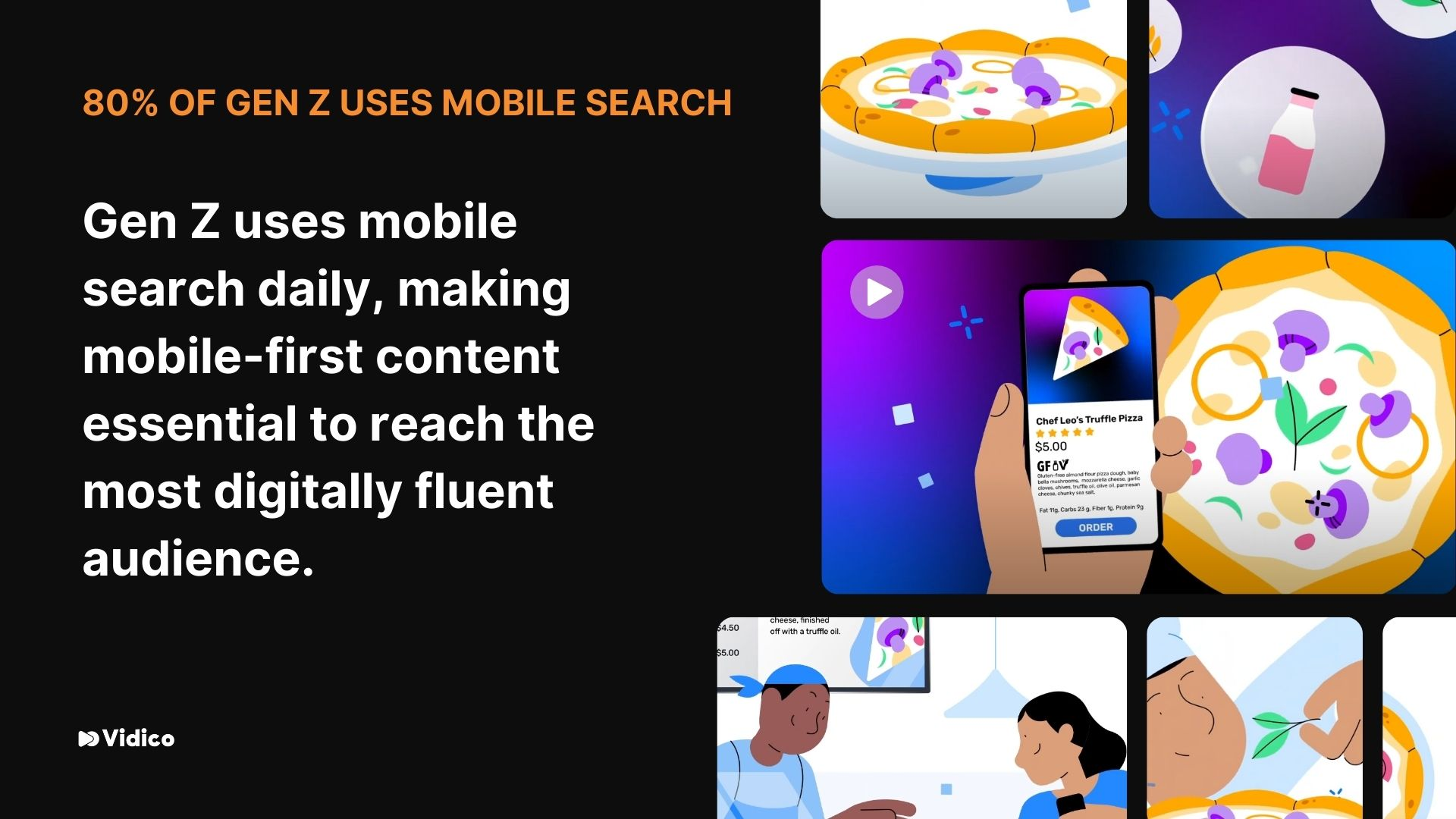
This generational gap says a lot about where the future of search—and buying power—is headed.
Gen Z lives on their phones [14], using mobile search to discover brands, products, and content daily. Meanwhile, older generations are still more desktop-reliant.
If your content isn’t mobile-first, you’re missing out on the most connected, digitally fluent internet users.
22. Mobile video consumption increases by 100% every year
Every year, mobile users double the time they spend watching videos. Whether on social media, in search, or through digital channels, video has become the go-to format for consuming content on mobile.
To keep up, content needs to be short, mobile-optimized, and designed to capture attention quickly on mobile phones.
23. The average smartphone user has 40+ apps installed but regularly uses only 18
People may download dozens of apps but stick with just a few. This marketing strategy highlights a key truth about mobile behavior: attention is limited, and competition for screen time is fierce.
As one of your marketing tactics, your content needs to meet users where they already are—in the apps they use daily, like YouTube, TikTok, Instagram, and email—not in an app they might never open again.
24. 57% of users won’t recommend a business with a poorly designed mobile site
When more than half of users say they wouldn’t recommend a business because of a clunky mobile site, it tells us one thing clearly: mobile design impacts trust.
If a page takes too long to load, the layout feels broken, or the navigation is frustrating, smartphone users don’t just bounce—they leave with a negative impression.
Join our On-Demand Masterclass on How to Scale B2B Creative →
25. Voice search on mobile devices has increased by 42% in the past year
Mobile users aren’t just typing—they’re speaking. A 42% jump in voice searches signals a major shift in how people find information: faster, hands-free, and more conversational.
Voice searches tend to be longer, more natural, and often framed as questions—like “What’s the best video marketing strategy for mobile?” or “How do I grow my brand on TikTok?”
26. 5G adoption has reached 45% of mobile users in developed markets
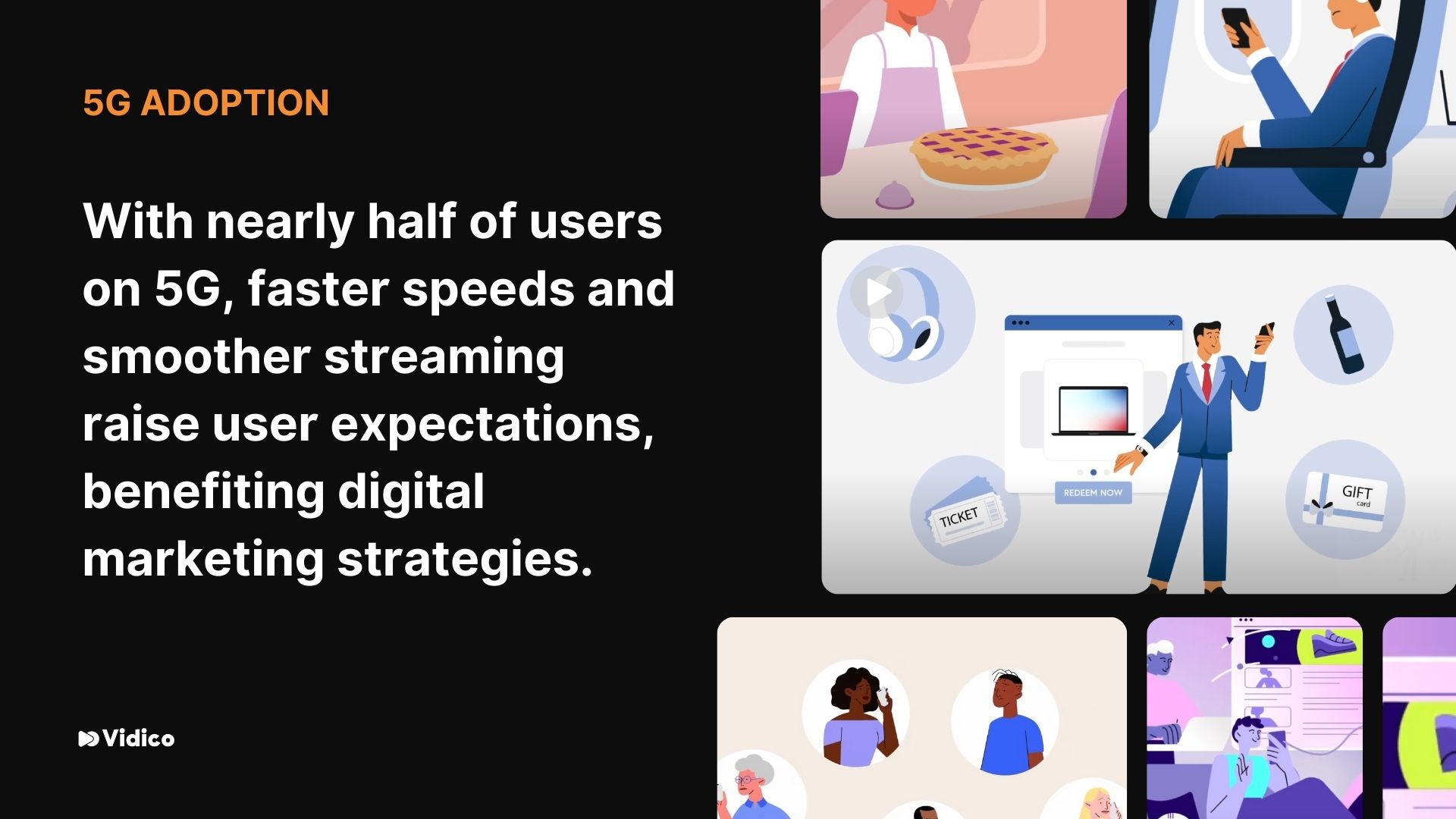
Nearly half of users in developed countries are now on 5G networks, which means faster speeds, smoother streaming, and fewer load-time issues.
The shift in digital marketing improves user experience—it changes user expectations, which will help marketing managers with their social media marketing strategy.
27. Mobile AR users are expected to reach 1.7 billion by the end of 2025
Augmented reality (AR) isn’t just a future trend—it’s becoming a mainstream mobile experience.
With 1.7 billion users projected by year’s end in digital marketing, AR is reshaping how most consumers interact with brands on their phones.
28. 37% of consumers are more likely to purchase from brands using mobile AR
More than one-third of internet users say: “If you show me the product in my space, I’m more likely to buy it.” Mobile augmented reality isn’t just a novelty—it’s a decision-making tool.
29. 63% of consumers prefer to find information about brands with their mobile devices
When people want to learn more about a product or company, most reach for their phone first.
Whether checking reviews, watching a demo, or browsing social content, mobile is the go-to source for brand discovery.
30. 187.5 million users in the U.S. will make at least one purchase via mobile in 2025
That’s over half the U.S. population buying decisions directly from their phones.
Whether it’s a one-click reorder, a swipe-up impulse buy, or a product discovered on social media, mobile has become the most convenient point of sale.
Book a free strategy session with our experts and get a tailored plan to drive results for your business →
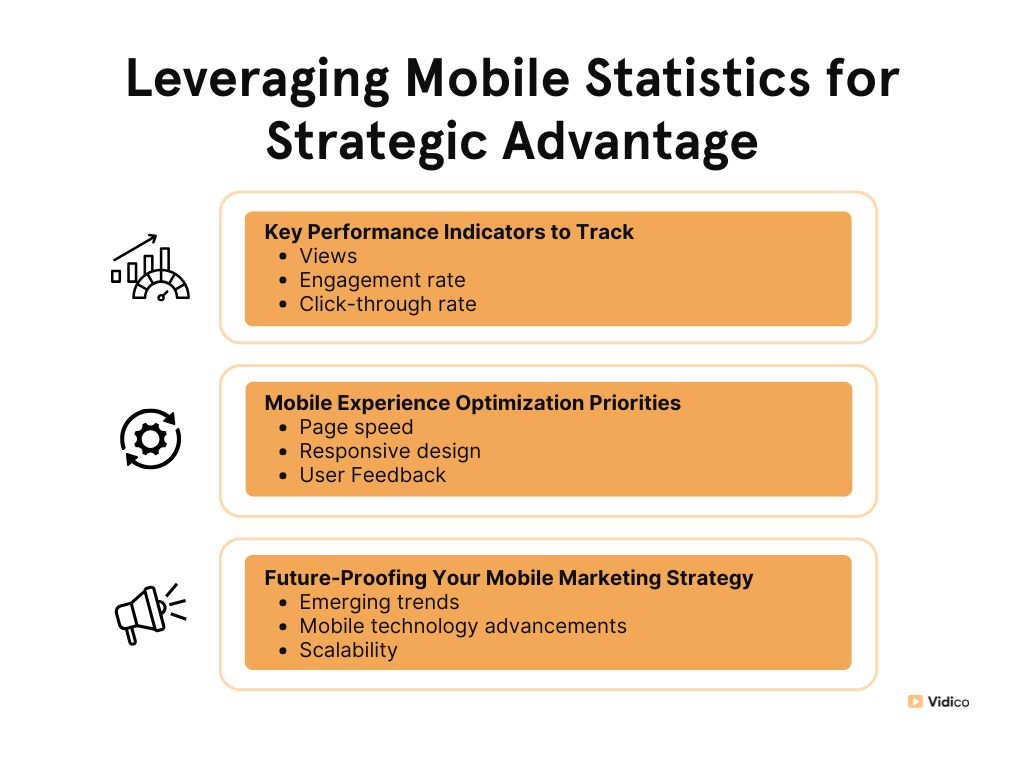
Generational Mobile Divide
- Gen Z Mobile Behavior (ages ~11–26)
- 80% of Gen Z use their smartphones as their primary device for online activity
- 70% prefer short-form videos for brand discovery (e.g., TikTok, Reels)
- 60% have made mobile purchases directly through social media
- 55% use voice search on mobile regularly
- On average, Gen Z spends 4+ hours per day on mobile apps
- Millennial Mobile Preferences (ages ~27–42)
- 93% own a smartphone
- 72% have purchased mobile devices in the past month
- 74% regularly check email on mobile
- 68% watch video content on mobile daily
- 87% use messaging apps as their primary communication tool
- Gen X and Boomer Mobile Adoption (ages ~43–77)
- 90% of Gen X and 61% of Boomers own smartphones
- 54% of Gen X make mobile purchases, compared to 34% of Boomers
- 56% of Boomers check email primarily on mobile
- 45% of Gen X use mobile banking apps regularly
- Boomers prefer mobile for calls and essential tasks, with rising interest in video content and messaging apps
FAQs
How effective is mobile marketing?
Mobile marketing is highly effective because it targets users where they spend most of their time—on their phones.
Strong engagement rates across video, search, and social consistently drive conversions and brand recall.
How big is the mobile marketing market?
The global mobile advertising market is projected to exceed $228 billion in 2025, reflecting rapid growth and widespread adoption.
This expansion is driven by mobile-first user behavior and increased investment in mobile-optimized content.
What is the impact of mobile marketing?
Mobile marketing shortens the path from discovery to conversion by delivering content instantly and in context. It also improves customer engagement through personalized, real-time messaging and mobile-first video.
Which mobile marketing channels offer the best ROI for tech brands?
Digital channels like TikTok, Instagram, and YouTube offer strong ROI due to their algorithm-driven reach and video-centric nature.
Mobile search engine and email marketing can maximize ROI, especially with fast-loading landing pages and concise video content.
How important is mobile optimization for B2B tech companies?
Mobile optimization is essential for B2B brands as decision-makers increasingly use smartphones for research, communication, and product discovery on paying customers.
A mobile-friendly experience builds trust, improves lead quality, and engages prospects.
What mobile marketing strategies are most effective for different generations?
Gen Z responds well to short-form videos, influencer content, and social media marketing.
Millennials prefer mobile email, app-based engagement, and branded video, while Gen X and Boomers engage more with clear, informative content and simple mobile interfaces.
Conclusion
The mobile marketing statistics don’t lie—mobile isn’t just the future; it’s the now.
Whether you’re struggling to scale content, engage on mobile-first platforms, or turn website traffic into results, there’s a smarter way to move forward.
Let’s talk. Schedule a 15-minute strategy call to see how our mobile-first video solutions can directly complement your current marketing efforts without slowing down your team or blowing your budget.
References:
- https://www.urmc.rochester.edu/behavioral-health-partners/bhp-blog/july-2023/cell-phone-usage
- https://www.statista.com/statistics/269916/mobile-advertising-spending-in-the-united-states/
- https://www.statista.com/statistics/377808/distribution-of-facebook-users-by-device/
- https://www.emarketer.com/learningcenter/guides/mobile-commerce-shopping-trends-stats/
- https://www.emailmonday.com/mobile-email-usage-statistics/
- https://www.wordstream.com/ppc
- https://www.emarketer.com/learningcenter/guides/social-commerce-brand-trends-marketing-strategies/
- https://www.statista.com/statistics/1285960/top-downloaded-mobile-apps-worldwide/
- https://www.statista.com/topics/1158/mobile-marketing/#topicOverview
- https://www.shopify.com/blog/youtube-algorithm
- https://www.pcmag.com/articles/yikes-the-average-american-spent-25-months-on-their-phone-in-2024
- https://pmc.ncbi.nlm.nih.gov/articles/PMC8622754/
- https://www.linkedin.com/pulse/82-consumers-use-phone-when-searching-local-business-jay-teetzel
- https://www.emarketer.com/content/search-behavior-being-redefined-thanks-generational-shifts






